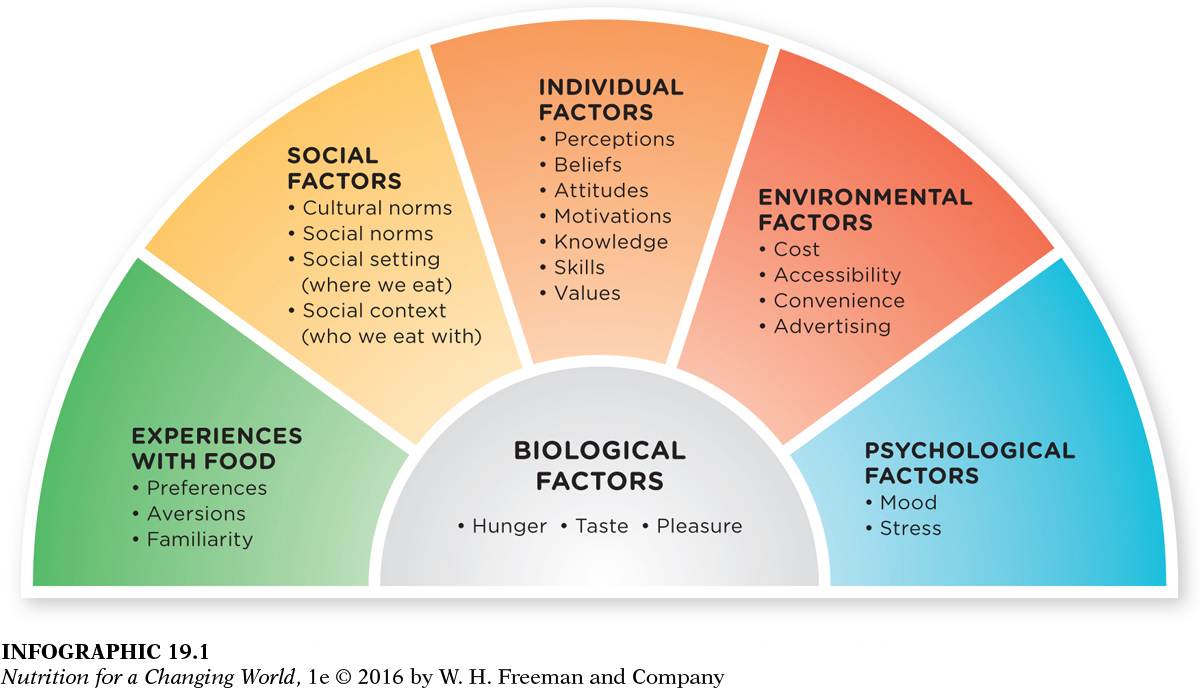DETERMINANTS OF EATING BEHAVIOR
As adolescents mature, their food decisions become much more their own, as parents have less of an influence on choices. This new independence, combined with the social and environmental changes, can erode healthy eating habits. Several factors come into play.
Personal food preferences and familiarity with foods start to dictate choice.
Nutrition knowledge and awareness can also have a significant influence on food choice. For example, studies show that student intakes of vegetables, fruits, and whole grains and their overall diet quality improve after they take nutrition courses.
Economic factors such as the price of food and an individual’s budget affect food selection.
In addition, social and cultural influences also have a significant effect on food choice and eating behavior.

A 2014 review of literature in the Journal of the Academy of Nutrition and Dietetics concluded that the “I’ll have what she or he is having” phenomenon is particularly common in college-
For college students, too, the structure of the meal plan and students’ schedules affect how they eat, and the campus environment dictates access to and availability of healthy options: if a dining facility or vending machine provides mostly nutrient-

Question 19.1
 What factors besides hunger, taste, and pleasure do you think have the strongest influence on your food choices?
What factors besides hunger, taste, and pleasure do you think have the strongest influence on your food choices?
There are many possible answers to this question, but most of them will be related to the categories outlined in Infographic 19.1, including food experiences and social factors, individual, environmental, biological, and psychological factors.